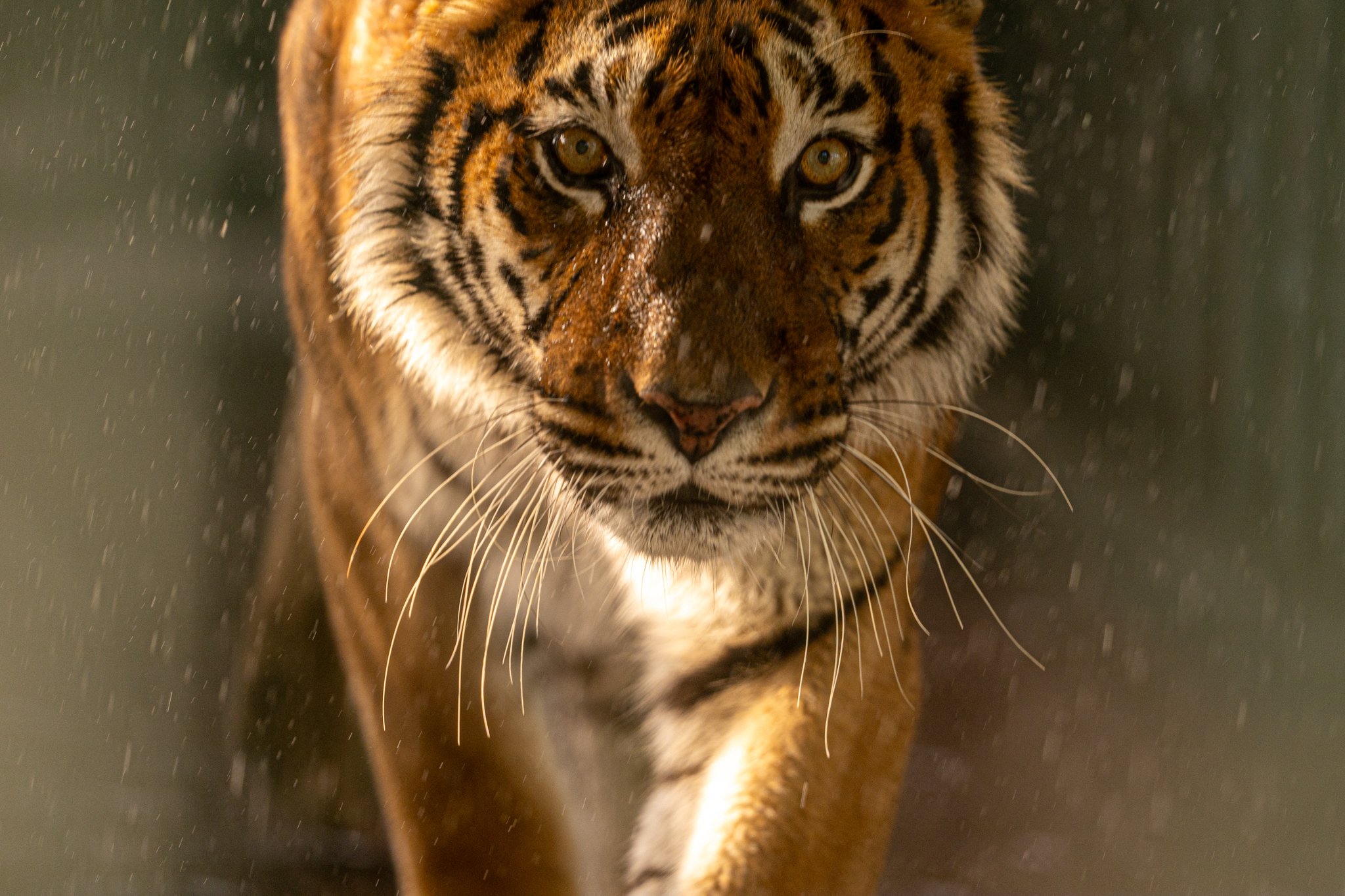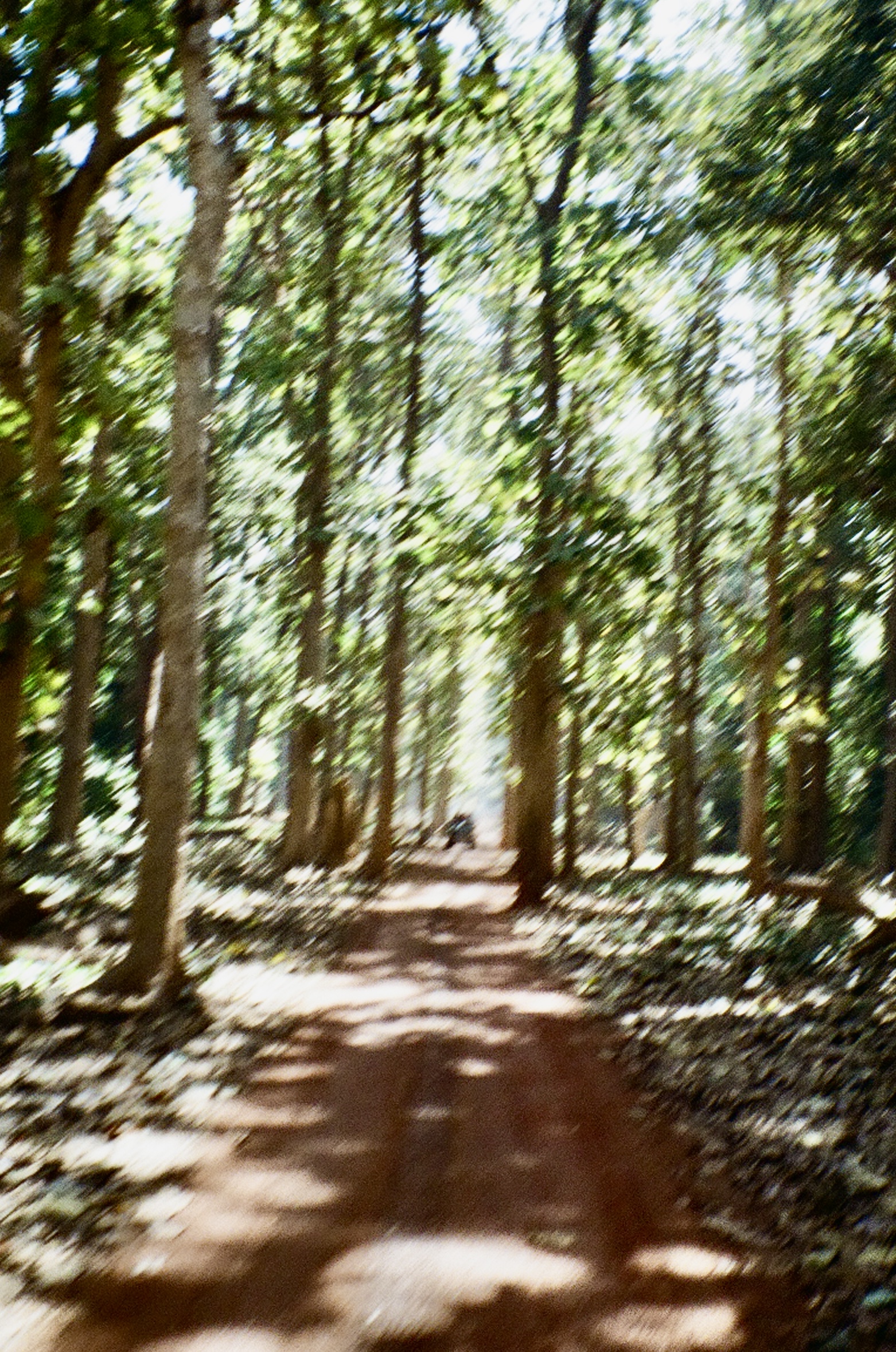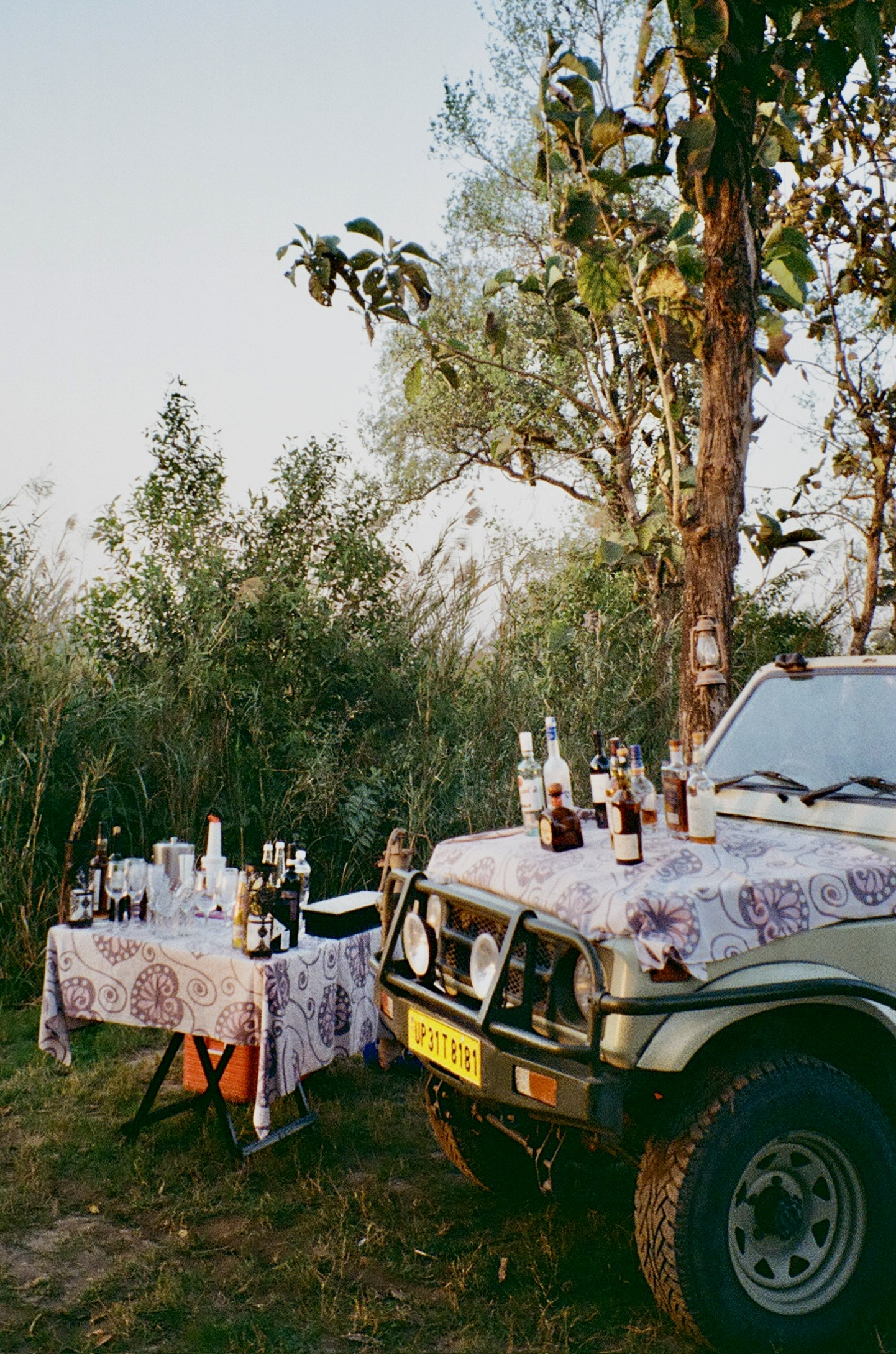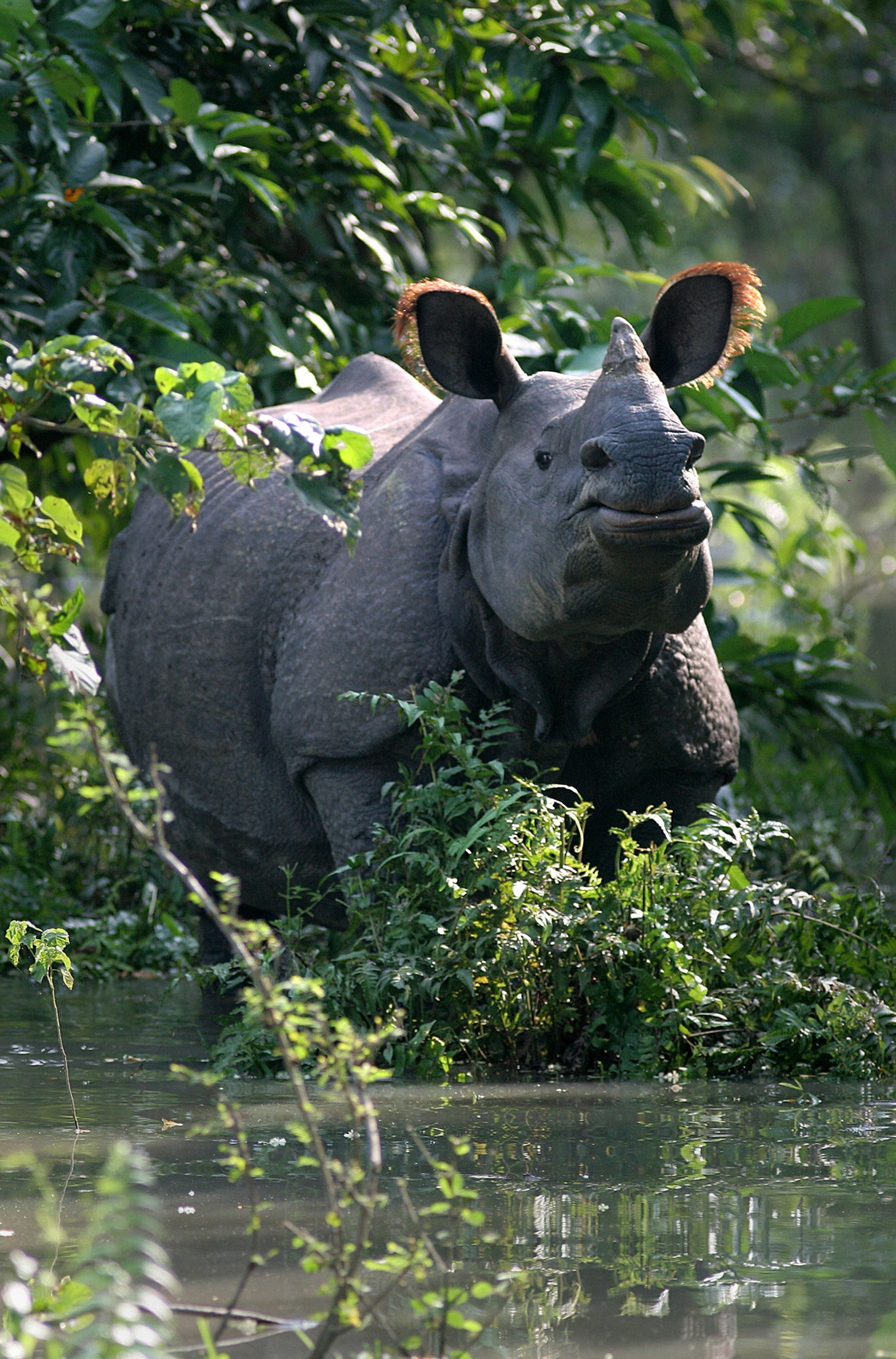‘We were off again in a cloud of dust, on the trail of a tiger we eventually ended up making eye contact with’: The art of the Indian safari
An Indian safari is a ‘is a study in patience and intuition’, but that’s no bad thing, says Richard MacKichan.


The charming city of Lucknow is famed for its artisans. You’ll find them in clusters around the city — the kebab makers shaping melt-in-the-mouth patties by hand and cooking them over coals, the metalsmiths hammering copper cookware into shape, the floral artists turning petals into elaborate garlands. Along one narrow, fragrant lane are a number of renowned perfumers, including Izharson where they’ve spent decades proudly recreating scents as diverse as the local biryanis and petrichor, that unmistakable rainfall-on-dry-earth smell.
As evocative as it was wafting from a glass decanter, it was no match for a lungful of the real thing I got arriving at Katarniaghat Wildlife Sanctuary at the tail end of a shower the following day. The four hour drive north had left behind the mad swirl of the city and deposited me firmly into Nature’s embrace.

The very green Katarniaghat sits in the Terai, the lowlands between northern India and the Himalayan foothills of southern Nepal.
The coming days were to be the culmination of a whirlwind trip through the state of Uttar Pradesh put together by the Explorations Company, experts in immersive off-the-beaten-path adventures. On a pre-trip Zoom briefing, general manager Chinmay Vasavada had remarked how verdant these particular parts were, but I was still overwhelmed by the sheer greenness, every Pantone present. ‘It’s so…green,’ I remarked, dumbly, more than once.
Katarniaghat and the neighbouring Dudhwa National Park sit in the Terai, the lowlands between northern India and the Himalayan foothills of southern Nepal. The fertile landscape — dense sal forests, swampy wetlands, dry savannah — and decades-long conservation programs make this a veritable wildlife haven, and the true home of the Indian safari. And it began on the water.
The Girwa river winds through the wildlife sanctuary and is one of the best places in the world to see critically endangered gharials, the narrow snouted, fish-eating crocodiles that we spied basking in their dozens on the bank our boat edged towards. These prehistoric looking creatures — the most aquatic of all crocodiles, with legs that work more like a turtle’s flippers — have thrived here thanks to the sanctuary’s efforts and their numbers are growing. Back on land we met some hand-reared hatchlings that will soon boost the headcount, tiny reminders of the area’s unofficial motto: ‘Where the rare is common’.
Buoyed by the good news tale, and a few other sightings — crocodiles, a grey-headed fish eagle on hunting duty, some swamp deer (the state animal of Uttar Pradesh) clustered on a small island — it was time to retire to Jaagir Manor, basecamp for our adventures.

A former hunting lodge turned heritage retreat, Jaagir Manor rests on the fringe of Dudhwa National Park.

Save for a row of safari Jeeps and an old style gas pump that were illuminated in the headlights as we crunched into the driveway and the lantern-lit path that led to my vast stilted cabin (luxurious, stylish, comfortable), it was a place that didn’t reveal its full glory until dawn. And what a reveal it was: a whitewashed lodge with British-era heritage sat at the heart of the estate, with a shapely pool and neat lawns just beyond, and thatched cabins scattered among the trees. On one of the lodge’s patios I learned my first ritual of an Indian safari: a cup of spiced bone broth chased with a shot of Indian rum to stave off the early morning chills. Not a breakfast I’d recommend if I’m honest, but being game enough to try endeared me to my guide, Amith Bhangre, who laughed as I winced.
Exquisite houses, the beauty of Nature, and how to get the most from your life, straight to your inbox.
Ranthambore National Park in the neighbouring state of Rajasthan has long been the most popular for wildlife-spotting in India, famed for its Bengal tiger population. As such, it operates a tight zonal system with strict vehicle limits to prevent overcrowding. But as we waited for the gates of Dudhwa to open, the rum still coursing through my veins, I could count the other vehicles on one hand. Once inside it was a free-roaming choose-your-own adventure down its dusty tracks.

Dudhwa is home to tigers too (including one called Scarface), but there is equal importance given to everything that calls these forests home; the ‘Endangered 18 of the Terai’ equating to a more precarious version of Africa’s ‘big five’. And where those wide open African plains can reveal multiple species in plain sight on arrival, the Indian safari is a study in patience and intuition. I found it meditative in the best way.
With the genial Amith at the wheel and a tracker in the passenger seat we sped through natural avenues of tall trees, pausing when he saw tracks, heard a specific call or spotted something my untrained eyes would easily have missed (some camouflaged deer, a strolling tortoise, an oriental pied hornbill up in the trees). As the day’s first sun rays started to poke through and paint the lush greens gold, the forest itself was spectacle enough. ‘My favourite music? Birdsong,’ joked Amith as he human Shazam’d the morning chorus.
At one point we parked up in view of the area’s largest watering hole and waited to see what might unfold. To my absolute delight a pair of rare smooth-coated Indian otters (on the Endangered 18 list) came to frolic and feast on fish before another grey-headed fish eagle also swooped in for a snack. And then Amith heard an alarm call and we were off again in a cloud of dust, on the trail of a tiger we eventually ended up making eye contact with.
The received wisdom with traditional safaris is that, animal-wise, bigger equals better. That never felt like the case here, but there is a special significance afforded to the tiger. There’s the rarity of course (another member of the Endangered 18), and their symbolism in Hinduism, but the very existence of Dudhwa National Park is tied to the plight of the tiger. The 200 square-mile conservation zone of today was granted its national park status in 1977 after extensive lobbying of then prime minister Indira Gandhi by one ‘Billy’ Arjan Singh.
A post shared by The Better India (@thebetterindia)
A photo posted by on
In 1976, Billy became the first person to reintroduce a hand-reared tiger into the wild from his Dudhwa estate known as Tiger Haven and his work won countless conservation awards. Jaagir Manor is tied closely to Billy too. Photos of and by him line the walls of the lounge bar and lobby, his books present on every bookshelf. With Amith we pay an afternoon visit to Tiger Haven, closed to the public and no longer lived in, where his library remains untouched and Billy is now buried. ‘RIP Honorary Tiger’ reads part of the inscription.

But tigers are not the only big beast in town. In 1984, a handful of one-horned Indian rhinos (above; also on the Endangered 18 list) were introduced into a grassy corner of Dudhwa still monitored by mahawats on elephants. Today, there are 46 rhinos and our next drive was with the hope of seeing one, Amith stopping to exchange intel with another couple of passing guides with the same idea (their Jeeps, notably, filled with local families rather than big-lensed Americans). After sitting patiently in some hopeful spots we rounded a corner to the still quite unbelievable sight of a mother and her calf casually grazing, almost in touching distance, with barely anyone around to witness it.
Reflecting that evening in true safari style — sundowners served from the bonnet of our Jeep (‘No rum for me, thanks’) — I tried to convey my thoughts to Amith. We saw loads but, given the tranquility, the scenery, the near sanctity of it all, I think I’d have been happy even if we hadn’t. It’s a bit like sport, I offered: it’s the taking part that counts. “I don’t really follow any sport. I’m too busy with my own sport – chasing wildlife” he countered. And we all know the thrill is in the chase.
Explorations Company’s 15-day journey through Uttar Pradesh starts from £14,500 per person. The price includes two nights in Delhi, one in Agra, three at Chambal Safari Lodge, three at Saraca in Lucknow, and three at Jaagir Manor in Dudhwa; international and domestic economy flights, private transfers, exclusive experiences and private safaris in Dudhwa.
Richard was the long-standing editor-in-chief at Mr & Mrs Smith and is now a freelance writer on travel, culture, and lifestyle for the likes of Mr Porter, The Standard, The Gentleman's Journal, BA's High Life, Suitcase, Time Out and more. He also consults for a number of luxury brands, has appeared on BBC radio, hosted Q&As at hotels and members clubs in London, New York and LA, and appeared on a number of panels for London Design Festival. Occasionally he DJs, too, and most people call him Richie.
